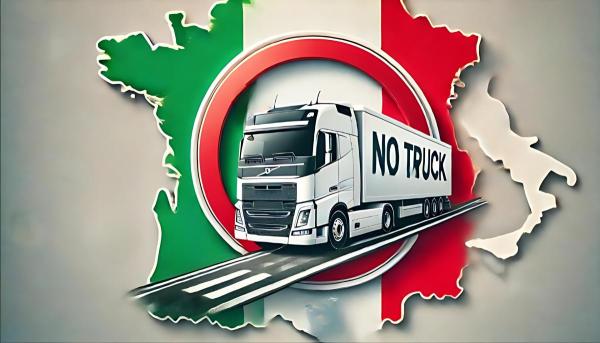
Italy: Ban on Trucks over 3.5 t in the Sant’Agnello Area Until the End of November
From November 12, 2025, a ban on vehicles over 3.5 t has been introduced on the section of Via Rota between the intersection with Via Califano and the boundary with Sant’Agnello. The decision is due to the need to carry out road surface maintenance works in the Sant’Agnello area, which are expected to last approximately 15 days.
The ban applies to all heavy vehicles over 3.5 t and buses, with no designated local detours for this traffic. Truck drivers must use alternative routes outside the closed section of Via Rota to avoid passing through the area affected by the works.
Ordinance No. 32/2025 issued by the Comune di Sant’Agnello also provides for the passage of emergency vehicles and pedestrians, while the responsibility for safety and signage in the work area lies with the company carrying out the works. The imposed ban applies exclusively to heavy road traffic in the work zone and does not replace any other administrative permits. Non-compliance with the regulations may result in penalties provided for under the Highway Code.
Source: Ordinance No. 32/2025

Disruptions on Key Transit Route – D1 in Slovakia Temporarily Closed
During the last November weekend, from Saturday, 29 November at 10:00 until Sunday, 30 November in the afternoon, a temporary closure of the D1 motorway near Bratislava towards the Slovak capital is planned.
The closed section covers the route from the Bernolákovo junction to the Zlaté Piesky area, while traffic in the opposite direction will remain unaffected. The works, related to the modernization and connection of the D1 motorway with the D4, require a temporary traffic restriction.
During the weekend, activities will include, among others, the renewal of horizontal road markings and the repositioning of safety barriers. These restrictions will allow the continuation of the modernization of the original D1 pavement and simultaneously facilitate drivers’ access to Bratislava from the Trnava direction. The planned closure is subject to weather conditions.
Traffic will be diverted onto the Old Senec Road I/61. The police urge drivers to exercise particular caution, especially at night and during periods of increased truck traffic.
The modernization of the D1 in front of Bratislava and the D1/D4 junction is the largest road investment in western Slovakia. Upon completion, drivers will benefit from a fully functional motorway on this key section.
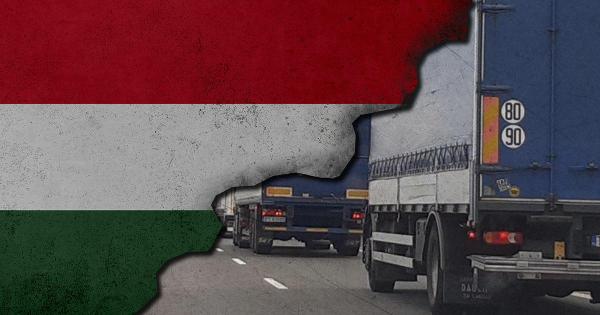
Daily New Restrictions. List of Roads Closed to Heavy Trucks in Hungary
In autumn 2025, acting on behalf of the Hungarian Ministry of Transport, the company Magyar Közút Nonprofit Zrt. began introducing new weight restrictions on numerous sections of national roads. As confirmed by Hungarian sources, many routes have been equipped with signs prohibiting the entry of trucks exceeding the permissible gross vehicle weight of 7.5 t, 12 t, 20 t, or 22 t.
The new rules apply to both transit traffic and – in some locations – destination traffic. In many cases, the exception “kivéve célforgalom” (“except for destination traffic”) has been introduced, but not everywhere. As a result, carriers must take into account detours, additional costs, and longer transport times.
The restrictions are being implemented locally, often without prior consultation with the industry, which – as representatives of the sector point out – may lead to serious operational disruptions and difficulties in transport planning. In our earlier publication – Trucks Over 20 Tonnes Banned from Parts of the Road Network in Hungary we presented the position of Hungarian transport organisations, which warn that such administrative measures threaten fragmentation of the road network, higher transport costs, and obstacles to maintaining supply chain continuity.
Below is the full list of road sections subject to restrictions, in accordance with the official source material:
⭕ Ban on entry for vehicles over 7.5 t GVW (except for destination traffic)
• Road 7 – section Szabadbattyán – Polgárdi (km 78+459 – 84+395)
• Road 7 – M7 junction – Polgárdi to Lepsény (km 87+772 – 94+095)
⭕ Ban on entry for vehicles over 12 t GVW (except for destination traffic)
• Road 39 – section Tállya – National Road 37 (km 17+470 – 28+870)
⭕ Ban on entry for vehicles over 22 t GVW (except for destination traffic)
• Road 64 – section Mátyásdomb – roundabout on Road 7 (km 25+060 – 37+524)
⭕ Ban on entry for vehicles over 20 t GVW (except for destination traffic)
• Road 81 – section Mezőörs – Pér (km 62+385 – 67+825)
• Road 82 – section Ravazd – Veszprémvarsány roundabout (km 45+555 – 53+720)
• Road 82 – section M1 – Nyúl (km 65+005 – 69+295)
• Road 44 – section Tiszakürt – Lakitelek (direction Kecskemét) (km 27+149 – 35+945)
⭕ Ban on entry for vehicles over 20 t GVW (no exceptions)
• Road 1 – Mosonmagyaróvár, Királyhidai út (km 164+385 – 164+637)
• Road 3 – section Vatta – Emőd
• Road 15 – section Mosonmagyaróvár – Bezenye (km 7+700 – 10+545)
• Road 85 – section Vitnyéd – Kapuvár (km 45+010 – 46+163)
• Road 85 – section Nagycenk – Pereszteg (km 65+1002 – 68+959)
• Road 86 – section Répcelak – Beled (km 120+990 – 127+656)
• Road 86 – section Páli – Szil (km 135+495 – 139+104)
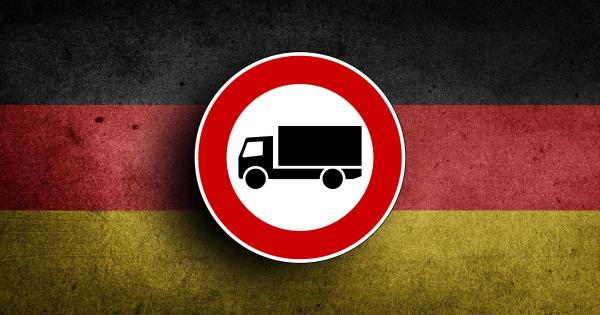
Hamburg: 55-hour closure of the A7 and the Elbtunnel
Hamburg is preparing for major traffic disruptions. On the first weekend of December 2025, the A7 motorway, together with the key Elbtunnel, will be completely closed for 55 hours.
The full closure will apply in both directions on the section between Hamburg-Heimfeld and Hamburg-Stellingen – from Friday, 5 December at 22:00 until Monday, 8 December at 05:00. Detours have been prepared for the duration of the closure, but authorities warn of significant disruptions and extended travel times.
Recommended detours for transit (freight) traffic:
➡️ Northbound (A7 → Flensburg):
Exit onto the A1 (Horster Dreieck) towards Lübeck
At the Bargteheide junction, switch to the A21 towards Kiel
Continue via the B205 to the Neumünster-Süd junction
Rejoin the A7
➡️ Southbound (A7 → Hanover):
Mirror route:
Neumünster-Süd exit → B205 → Wahlstedt → A21 → Bargteheide → A1 → Horster Dreieck → A7
Delays should also be expected on the detour routes. The tunnel closure is necessary due to the installation of new overhead traffic signs and the implementation of traffic control software. These works are part of a large-scale A7 modernisation project, which includes expanding the motorway to eight lanes and connecting it with the A26.
The A7 is Germany’s most important north–south corridor and one of the busiest motorway sections in the country – in some places carrying more than 130,000 vehicles per day.

Christmas Eve Becomes a Public Holiday, but Without Truck Driving Bans. Ministry Confirms
Starting in 2025, 24 December will officially become a statutory public holiday. This is the first time such a provision has been introduced in Poland. However, as confirmed by the Ministry of Infrastructure in a statement provided to our editorial team, this change will not result in the introduction of truck driving bans on Christmas Eve.
The currently applicable regulations regarding restrictions on the movement of heavy vehicles stem from the Regulation of the Minister of Transport on periodic restrictions and bans on the movement of certain types of vehicles on roads. This regulation includes only the specific public holidays listed therein, such as 25 and 26 December. It does not include either 24 December or Epiphany (6 January), even though both days are statutory holidays.
The Ministry clearly states that 24 December is not included in the list of days subject to bans on the movement of vehicles and vehicle combinations with a gross vehicle weight exceeding 12 tonnes. Therefore, truck transport may take place without restrictions on Christmas Eve. The same applies to 6 January, for which no driving bans are in force. Meanwhile, the regulations for 25 and 26 December remain unchanged, meaning the restrictions will apply from 8:00 to 22:00. Importantly, the Ministry of Infrastructure reported that no legislative work is currently underway to amend the regulation, despite the fact that Christmas Eve has been designated as a public holiday.
Source: Ministry of Infrastructure for etransport.pl
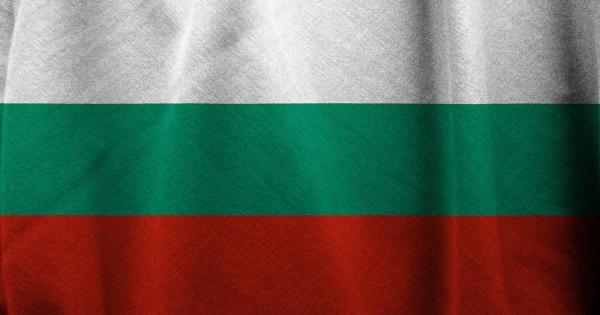
Bulgaria: Complete Closure of the Giurgiu–Ruse Bridge. Trucks to Stop for 24 Hours
Truck drivers should prepare for significant disruptions at the Bulgarian-Romanian border. The Giurgiu-Ruse Bridge (also known as the Friendship Bridge over the Danube) will be completely closed to traffic on November 4, 2025, due to ongoing large-scale renovation works.
According to the official announcement:
⭕ Passenger car traffic will be restricted between 09:00 and 21:00.
⭕ Heavy goods vehicles with a gross vehicle weight exceeding 3.5 tons will be prohibited from crossing for a full 24 hours – from 09:00 on November 4 to 09:00 on November 5.
During this period, truck drivers will be able to use designated parking areas and rest facilities in the regions of Ruse, Veliko Tarnovo, Yambol, and Haskovo. The renovation of the Giurgiu-Ruse Bridge is part of a broader program to modernize road infrastructure between Bulgaria and Romania.
As the Danube crossing serves as one of the key transit points for international transport between Southern and Central Europe, drivers are advised to take the closure into account when planning their routes and to consider alternative border crossings, such as Vidin-Calafat.
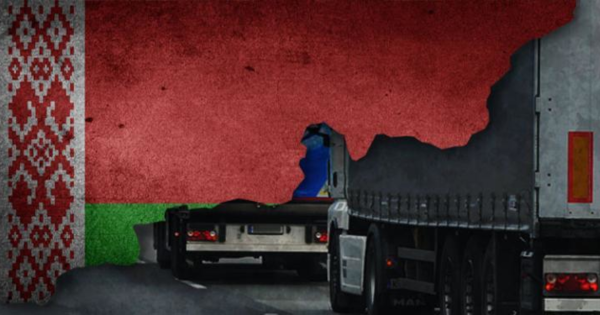
Polish and Lithuanian Trucks Banned from Entering Belarus for Over Two Years
The Council of Ministers of the Republic of Belarus has introduced a new road traffic restriction, detailed in a regulation published on November 1, 2025, on the National Legal Internet Portal (6-1/55394).
The regulation imposes a ban on the use of the territory of the Republic of Belarus by:
❌ Trucks and tractor units registered in EU member states,
❌ Trailers and semi-trailers registered in the Republic of Poland and the Republic of Lithuania,
❌ Passenger cars registered in Poland that carry out international transport operations under individual waybills or CMR documents.
The ban also applies to trailers and semi-trailers registered in Poland and Lithuania, even if they are hauled by tractor units from other countries. Violation of the ban concerning trailers/semi-trailers from Poland and Lithuania, as well as passenger cars from Poland, is regarded as performing international road transport within the territory of Belarus without the required permit and entails liability under administrative offense regulations.
In the event of violations, Belarusian authorities will direct vehicles to leave the country via the border with Russia or to the nearest customs checkpoint.
The regulation entered into force on the date of its publication and will remain in effect until December 31, 2027.
The full decree is available HERE

France: Truck Traffic Ban in the Pas de l’Escalette Tunnel on the A75. Detours Announced
The Prefect of the Hérault department has introduced an immediate ban on heavy goods vehicle traffic in the Pas de l’Escalette tunnel on the A75 motorway. The restriction remains in force until further notice.
The decision was prompted by a power failure that disabled the tunnel’s ventilation and smoke extraction systems. For safety reasons, traffic involving heavy trucks, vehicles transporting hazardous materials, and buses has been completely suspended in both directions.
Two mandatory turning points have been designated for heavy vehicles:
▫️ Northbound (toward Millau) – Exit 52 Lodève Nord (Hérault department)
▫️ Southbound (toward Montpellier) – Exit 42 Sévérac-le-Château (Aveyron department)
Authorities urge all transport operators to strictly comply with the ban and use only the designated detour routes specified in the official traffic management plan. Drivers are also reminded not to use local roads, which are unsuitable for heavy vehicles.

Slovakia: New Penalties for Drivers and Fewer Restrictions for Trucks During Holidays
The Government of Slovakia approved on November 5 a draft comprehensive amendment to the Road Traffic Act. The changes are set to take effect on May 1, 2026, with the portion concerning driver training becoming effective a year later. The reform aims to improve road safety, enhance pedestrian protection, and enforce traffic regulations more effectively.
The amendment prepared by the Ministry of the Interior of the Slovak Republic includes, among other things:
– granting municipalities and towns new powers to measure speed and penalize traffic offenses,
– stricter sanctions for speeding drivers,
– introduction of a rehabilitation program for repeat offenders,
– new rules for the training and examination of driver candidates,
– and additional changes concerning cyclists, e-scooters, and truck traffic.
State Secretary of the Ministry of the Interior, Patrik Krauspe, emphasized that this is part of a broader strategy aimed at improving road safety and reducing the number of accident victims. In 2024, over 11,000 accidents occurred on Slovak roads, resulting in 262 fatalities and nearly 5,000 injuries. The new regulations are scheduled to enter into force on May 1, 2026, while changes regarding the driver training system will apply from May 1, 2027.
▶️ The most controversial change is the expansion of so-called objective liability. Municipalities and towns will be able to install stationary speed cameras and issue fines for certain offenses, including speeding, running a red light, failure to stop at a STOP sign, driving in the wrong direction, violating entry restrictions, or passing through a closed railway crossing. Importantly, the vehicle owner will not be able to avoid the fine by naming the person who was actually driving, similar to the system used for road tolls. However, the owner will be able to seek reimbursement from the driver. The ČESMAD Slovakia Association of Carriers has already opposed these changes during inter-ministerial consultations, warning that they could lead to abuses by municipalities and the use of cameras as a source of revenue rather than a tool to improve safety.
▶️ Pedestrians will be given greater priority at crosswalks, and drivers will be required to yield to anyone who clearly intends to step onto the crossing, not just those already on it. At the same time, pedestrians will not be allowed to step onto the roadway suddenly. The new regulations also apply to e-scooters and similar electric vehicles, which will not be permitted on sidewalks unless signs explicitly allow it. A new category of small electric vehicles will be introduced, with a speed limit of 25 km/h and a prohibition on installing seats.
▶️ Fines will remain at the same levels, but the speed thresholds at which they are applied will be lowered.
Fines ranging from €250 to €800 will be imposed for exceeding the speed limit by 31 km/h in urban areas and by 41 km/h outside urban areas (previously 51 km/h and 61 km/h).
Police officers will also be authorized to suspend a driver’s license on the spot.
▶️ A graduated sanction system will be introduced for drivers who repeatedly violate traffic regulations. Anyone who commits a serious offense three times within 12 months will be required to undergo a mandatory rehabilitation program with a transport psychologist and supplementary training. Upon a fourth offense, an additional health and psychological assessment will be required.
▶️ From 2027, the Category B driving test will be divided: candidates must first pass the theoretical part before beginning practical driving and taking the second part of the exam. This is intended to improve drivers’ theoretical preparation and reduce the number of failed exams. A minimum of lower secondary education will be required to enroll in the course, and candidates will be able to register for the exam online.
▶️ The ban on alcohol and intoxicants will also apply to passengers on motorcycles, quads, and multi-person bicycles.
▶️ Cyclists will be allowed to use the sidewalk until the age of 15 (currently up to 10 years old).
▶️ The ban on driving trucks over 7.5 tons during holidays will be shortened, and the list of exceptions expanded to allow travel to the final destination or transport of goods whose delivery cannot be delayed, such as in just-in-time production.

Italy: Ban on Trucks over 3.5 t in the Sant’Agnello Area Until the End of November
From November 12, 2025, a ban on vehicles over 3.5 t has been introduced on the section of Via Rota between the intersection with Via Califano and the boundary with Sant’Agnello. The decision is due to the need to carry out road surface maintenance works in the Sant’Agnello area, which are expected to last approximately 15 days.
The ban applies to all heavy vehicles over 3.5 t and buses, with no designated local detours for this traffic. Truck drivers must use alternative routes outside the closed section of Via Rota to avoid passing through the area affected by the works.
Ordinance No. 32/2025 issued by the Comune di Sant’Agnello also provides for the passage of emergency vehicles and pedestrians, while the responsibility for safety and signage in the work area lies with the company carrying out the works. The imposed ban applies exclusively to heavy road traffic in the work zone and does not replace any other administrative permits. Non-compliance with the regulations may result in penalties provided for under the Highway Code.
Source: Ordinance No. 32/2025